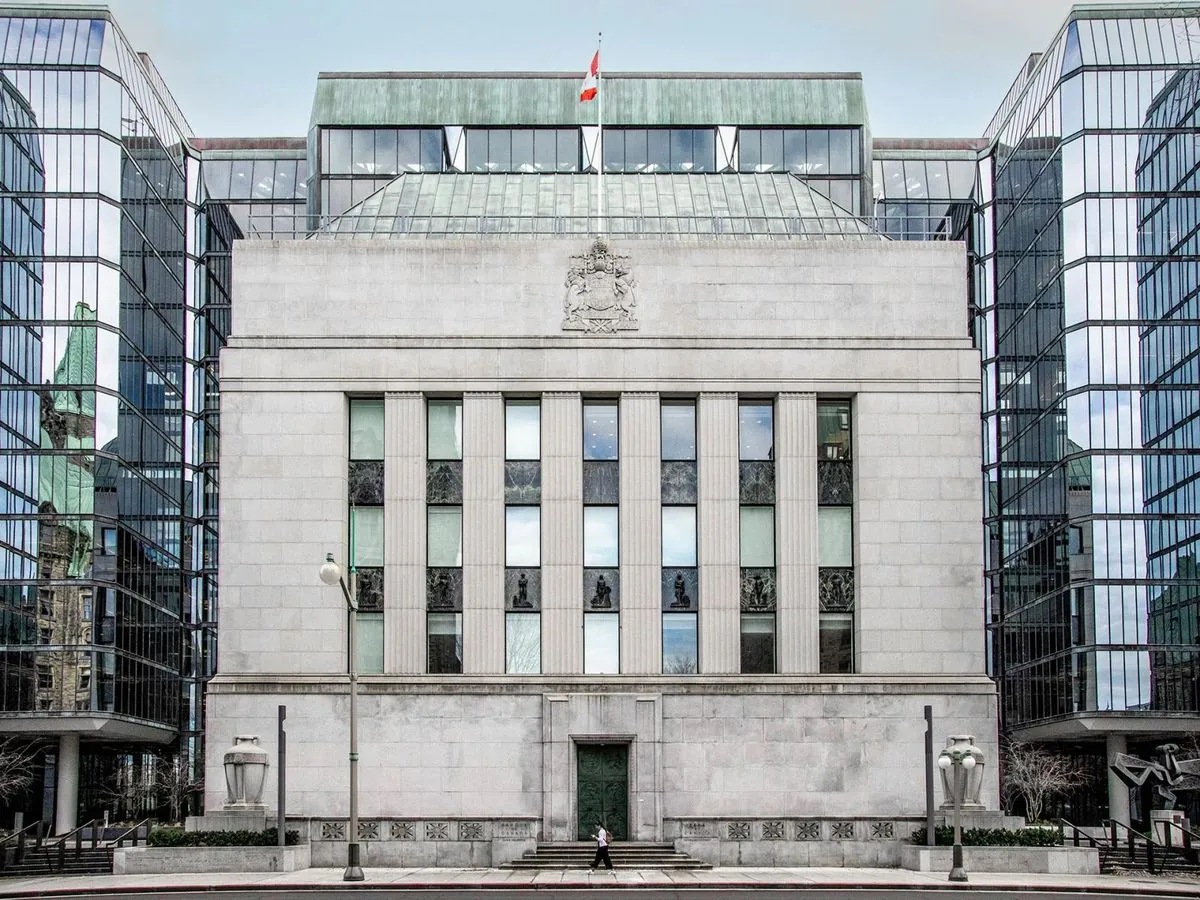Bank of Canada Split on Inflation Outlook Ahead of Rate Cut
Bank of Canada's governing council divided on inflation risks before September rate cut. August inflation hit 2% target, sparking hopes for larger October reduction amid economic concerns.

The Bank of Canada's governing council faced a dilemma prior to its September 4, 2024, decision to reduce interest rates for the third consecutive time. Minutes released on September 18 reveal a split among council members regarding the inflation outlook, highlighting the complex economic landscape the central bank is navigating.

Established in 1934, the Bank of Canada serves as the nation's central bank, overseeing monetary policy and financial system stability. The bank's primary tool for monetary policy is the target for the overnight rate, which it has adjusted three times since June 2024, resulting in a cumulative 75 basis point reduction to 4.25%.
The council's deliberations centered on two opposing forces affecting inflation:
- Persistently high shelter and services costs
- A weakening economy and rising unemployment
Some members viewed these risks as balanced, while others expressed growing concern about downside risks to inflation, particularly if economic and labor market conditions deteriorated further.
The Bank of Canada aims to maintain inflation near 2%, the midpoint of its 1% to 3% target range. Recent data showed the annual inflation rate in August 2024 reached this 2% target, marking its lowest point since February 2021. This development has fueled speculation about a potential larger rate cut at the bank's next meeting on October 23, 2024.
Economic indicators paint a concerning picture:
- Growth stagnation in June 2024, with projections for flat performance in July
- Unemployment rate rising to 6.6% in August 2024, up from 5.0% in January 2023
- Third-quarter GDP growth likely to be half of the Bank of Canada's 2.8% forecast
The governing council acknowledged that if economic recovery and labor market improvements fail to materialize as anticipated, a more rapid reduction in the policy rate might be necessary. They emphasized the need to guard against downside inflation risks stemming from weak economic activity.
"Per capita consumption could take longer to rebound and worsen further if businesses postponed hiring due to soft demand. This could weaken inflation more than expected."
As Canada's ninth-largest economy by nominal GDP grapples with these challenges, the Bank of Canada's decisions in the coming months will be crucial. The central bank, which was the first to adopt an inflation-targeting framework in 1991, continues to conduct monetary policy independently of the federal government.
With the Canadian dollar being one of the world's major reserve currencies and the housing market playing a significant role in economic growth, the Bank of Canada's balancing act between controlling inflation and stimulating growth remains a focal point for both domestic and international observers.


































